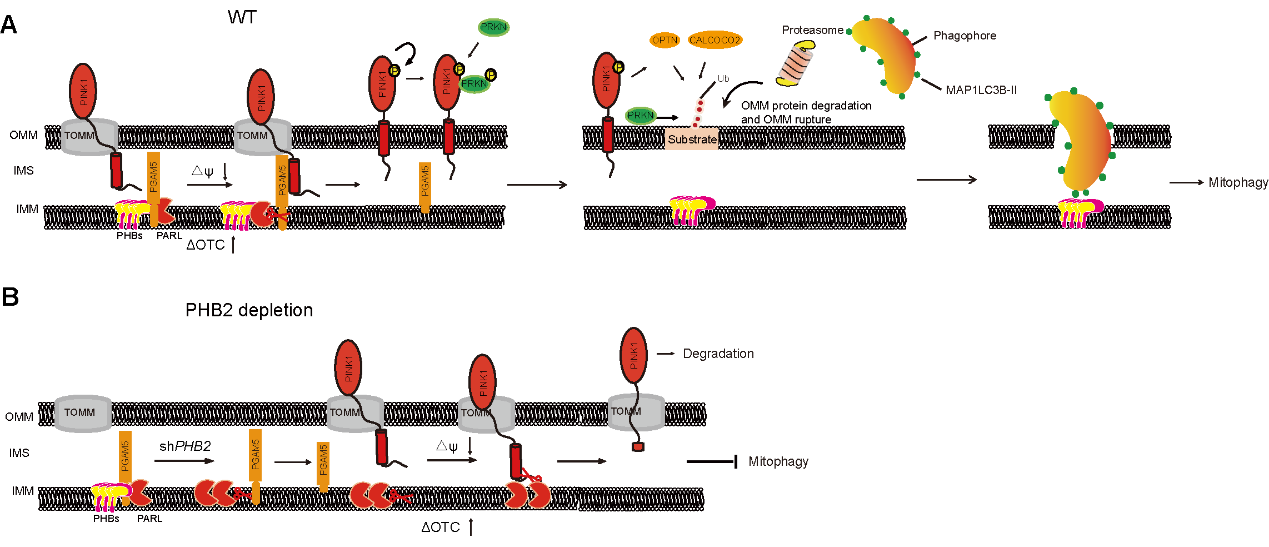Recently, Zhiyin Song lab published a paper titled with “PHB2 (prohibitin 2) promotes PINK1-PRKN/Parkin-dependent mitophagy by the PARL-PGAM5-PINK1 axis” in “Autophagy” on June 16, 2019. This study revealed a new mechanism by which PHB2 regulates mitophagy through the PARL-PGAM5-PINK1 axis. In heathy mitochondria, PINK1 is recognized and cleaved by mitochondrial proteases, including PARL. However, in damaged mitochondria, PINK1 is stabilized on the mitochondrial outer membrane, and then Parkin is recruited to promote mitophagy. It has been reported that PHB2 serves as an inner mitophagy receptor. However, whether and how PHB2 regulating the PINK1-Parkin pathway are still unclear. The study found that PHB2 negatively regulate the protease PARL and protect PGAM5 from being cleaved by PARL. The full-length PGAM5 can stabilize PINK1 on mitochondrial outer membrane, and then recruit Parkin and other mitochondrial receptors such as NDP52 to promote mitophagy. Besides, Zhiyin Song lab found that FL3, a small molecule compound that binds to PHB2, significantly inhibits the PINK1-Parkin-mediated mitophagy by binding to PHB2, and effectively blocks cancer cell growth. This study reveal that the PHB2-PARL-PGAM5-PINK1 axis is a novel pathway of PHB2-mediated mitophagy and that targeting PHB2 with the chemical compound FL3 is a promising strategy for cancer therapy.

Figure. The model of a novel signal pathway for PHB2-mediated mitophagy.

